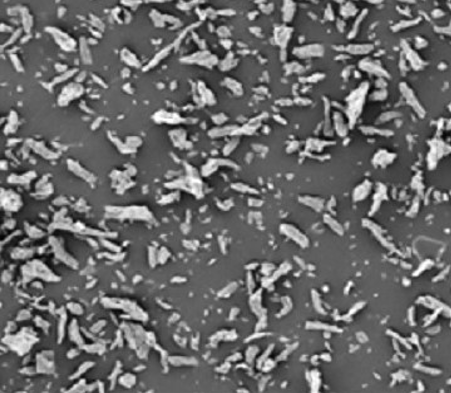DISTINCTIVE FEATURES OF CELLULOSE NANOCRYSTALLITES
UDC 547.458.8:581.135.55
Аннотация
In this paper, a set of methods was used to study the structural characteristics and properties of cellulose nanocrystallites and free cellulose nanocrystalline particles (CNCs). It was shown that cellulose nanocrystallites have three main distinctive features. The first distinctive feature of cellulose nanocrystallites is their rod-like shape with a quite high aspect ratio and a low percolation threshold. The second distinctive feature of nanocrystallites is their highly developed specific surface area that leads to the spontaneous crystallization and aggregation of rod-like crystallites by their lateral planes. This aggregation process is thermodynamically favorable because it leads to a decrease in the specific surface area of nanocrystallites and a reduction of the thermodynamic potential. The third distinctive feature of cellulose nanocrystallites is the paracrystalline structure of their surface layers, which significantly affects structural characteristics such as lattice distortion, interplanar spacings, parameters, and volume of the crystalline unit cell, etc. Along with structure, the paracrystalline fraction affects also important physical and physical-chemical properties of cellulose, such as accessibility to deuteration, the content of CII-allomorph after cellulose alkalization, melting point of nanocrystallites, etc. Correlation equations were derived that provide to predict the structural characteristics and properties of nanocrystallites using the content of the paracrystalline fraction.
Скачивания
Metrics
Литература
Krässig H. Cellulose: Structure, Accessibility and Reactivity. Amsterdam: Gordon and Breach Publishers, 1996, 376 p.
Ioelovich M. J. Polym. Sci. Ser. A, 2016, vol. 58, pp. 925–943.
Ioelovich M. Cellulose Nanostructured Natural Polymer. Saarbrücken: Lambert Academic Publishing, 2014, 88 p.
Ioelovich M. Wood Chem., 1991, vol. 4, pp. 27–33.
Moon R., Martini A., Nairn J. et al. Chem. Soc. Rev., 2011, vol. 40, pp. 3941–3994.
Eichhorn S.J., Etale A., Wang J. et al. J. Mater. Sci., 2022, vol. 57, pp. 5697–5767.
Habibi Y., Lucia L.A., Rojas O.J. Chem. Rev., 2010, vol. 110, pp. 3479–3500.
Ioelovich M., Leykin A. Cellul. Chem. Technol., 2006, vol. 40, pp. 313–317.
Yulina R., Gustiani S., Kasipah C., Sukardan M.D. E3S Web of Conf., 2020, vol. 148, pp. 1–6.
Ioelovich M. SITA, 2016, vol. 18, pp. 72–77.
Ioelovich M. J. Chem. Educ. Res. Pract., 2017, vol. 1, pp. 1–6.
Ioelovich M. Adv. Env. Waste Manag. Recycling, 2020, vol. 3, pp. 128–132.
Kargarzadeh H., Ioelovich M., Ahmad I. et al. Handbook of Nanocellulose and Cellulose Nanocomposites. Singapore: Wiley, 2017, vol. 1-1, pp. 1–50.
Ioelovich M. Handbook of Nanocellulose and Cellulose Nanocomposites. Singapore: Wiley, 2017, vol. 1-2, pp. 51–100.
Ioelovich M. Bioresources, 2008, vol. 3, pp. 1403–1418.
Drożdżek M., Zawadzki J., Zielenkiewicz T., Kłosińska T. Wood Res., 2015, vol. 60, pp. 255–262.
Ioelovich M. Chem. Res. J., 2017, vol. 2, pp. 58–67.
Woodcock C., Sarko A. Macromolecules, 1980, vol. 13, pp. 1183–1187.
Sugiyama J., Vuong R., Chanzy H. Macromolecules, 1991, vol. 24, pp. 4168–4175.
Stout G.H., Jensen L.H. X-ray Structure Determination: A Practical Guide. New York: Wiley, 1989, 480 p.
Ioelovich M. Progress in Characterization of Cellulose and Cellulose Esters. Chisinau: Eliva Press, 2023, 80 p.
Dufresne A. J. Nanosci. Nanotechnol., 2006, vol. 6, pp. 322–330.
Ioelovich M., Leykin A., Figovsky O. Bioresources, 2010, vol. 5, pp. 1393–1407.
Simon M., Fulchiron R., Gouanvé F. Polymers, 2022, vol. 14, p. 2836.
Ioelovich M. World J. Adv. Eng. Technol. Sci., 2022, vol. 5, pp. 1–15.
Han J., Zhou C., Wu Y. et al. Biomacromolecules, 2013, vol. 14, pp. 1529–1540.

Copyright (c) 2024 Химия растительного сырья

Это произведение доступно по лицензии Creative Commons «Attribution» («Атрибуция») 4.0 Всемирная.

This work is licensed under a Creative Commons Attribution 4.0 International License.
Авторы, которые публикуются в данном журнале, соглашаются со следующими условиями:
1. Авторы сохраняют за собой авторские права на работу и передают журналу право первой публикации вместе с работой, одновременно лицензируя ее на условиях Creative Commons Attribution License, которая позволяет другим распространять данную работу с обязательным указанием авторства данной работы и ссылкой на оригинальную публикацию в этом журнале.
2. Авторы сохраняют право заключать отдельные, дополнительные контрактные соглашения на неэксклюзивное распространение версии работы, опубликованной этим журналом (например, разместить ее в университетском хранилище или опубликовать ее в книге), со ссылкой на оригинальную публикацию в этом журнале.
3. Авторам разрешается размещать их работу в сети Интернет (например, в университетском хранилище или на их персональном веб-сайте) до и во время процесса рассмотрения ее данным журналом, так как это может привести к продуктивному обсуждению, а также к большему количеству ссылок на данную опубликованную работу.











